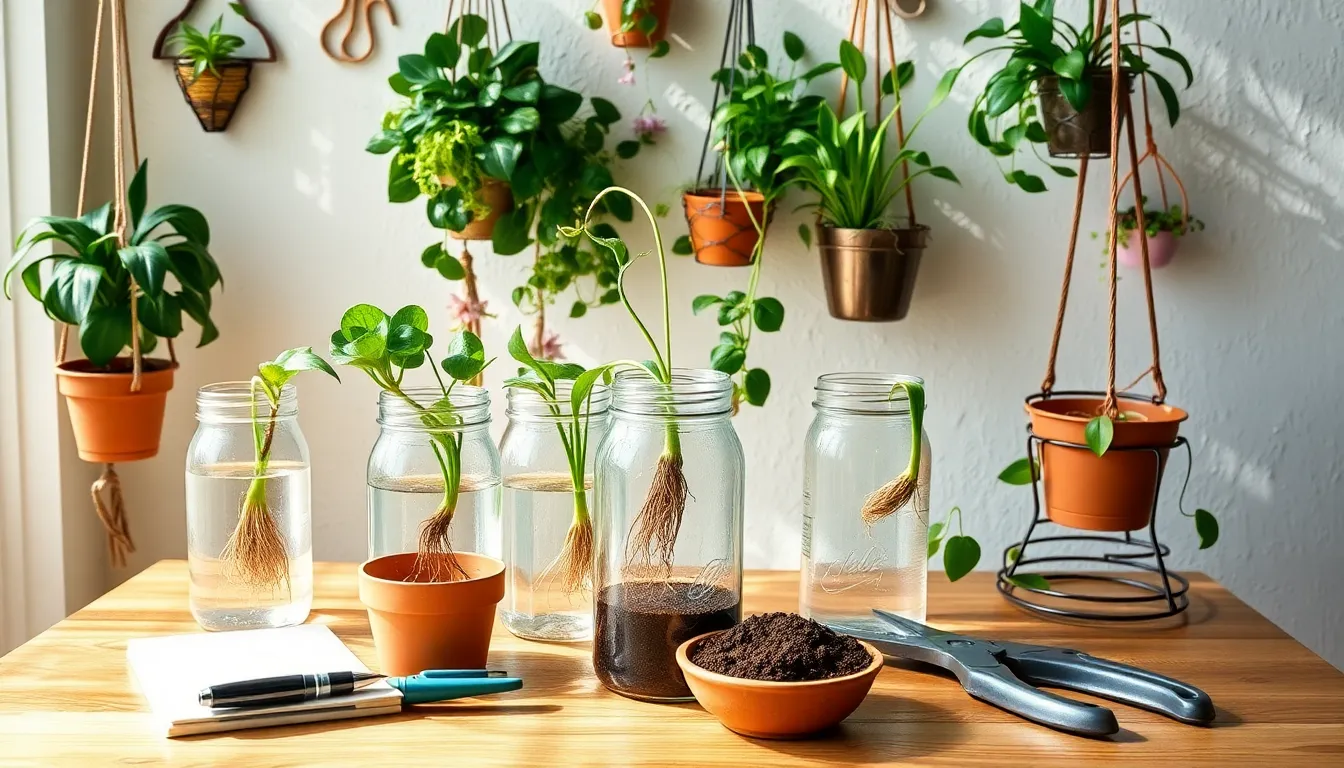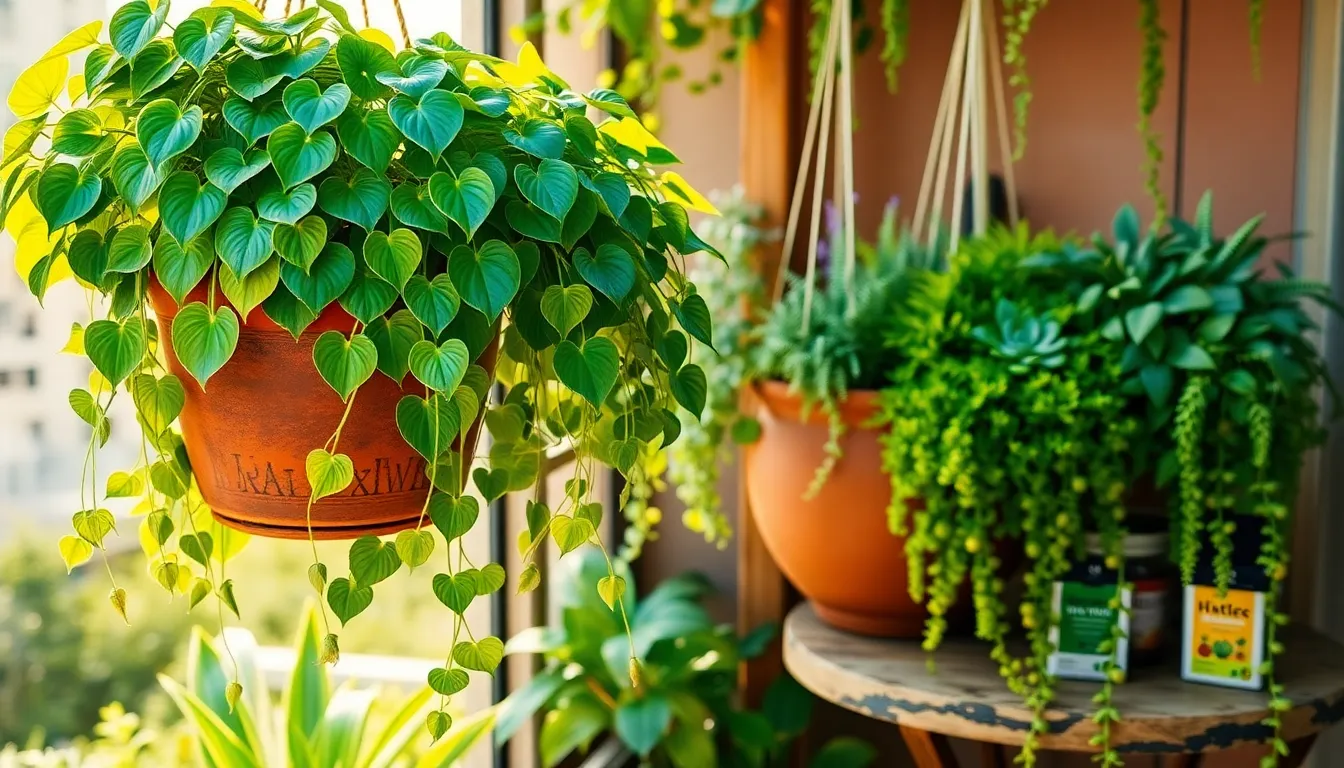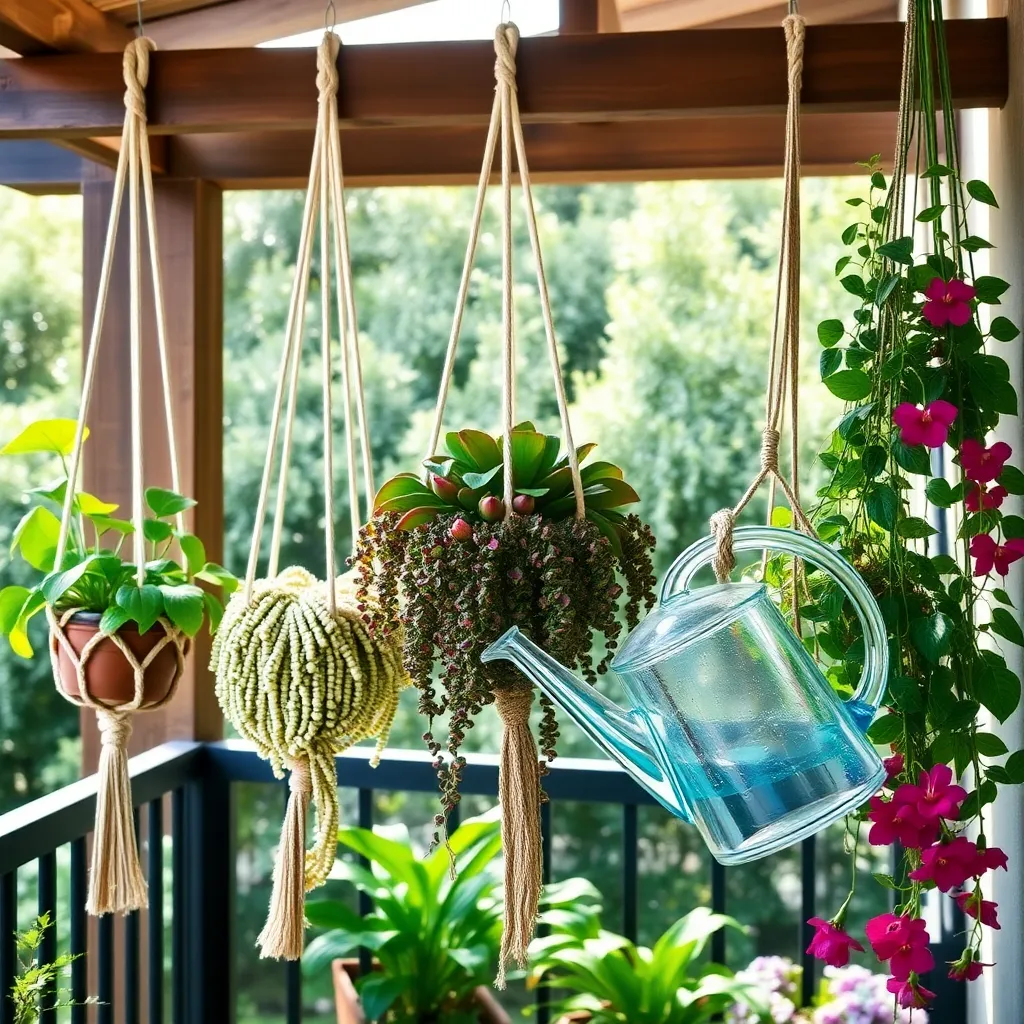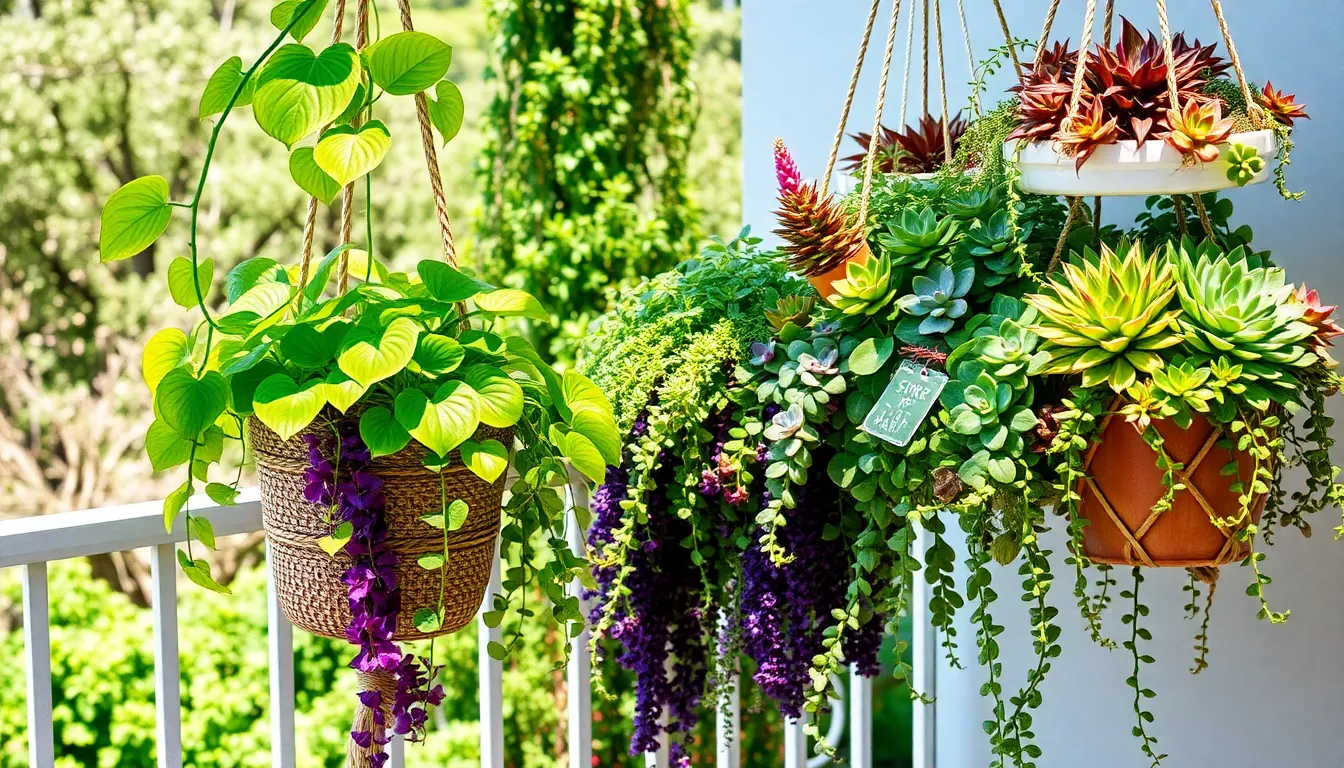Welcome to the lush world of hanging plants, where the art of propagation brings not only a sense of accomplishment but also a vibrant touch of greenery to any space. Whether you’re a seasoned gardener or just starting your journey, mastering the skill of propagating hanging plants at home can transform your indoor garden into a thriving, suspended oasis. The beauty of hanging plants lies in their ability to elevate the aesthetic of any room, literally and figuratively, while purifying the air and boosting your mood.
In this article, you’ll discover the step-by-step process to successfully propagate your favorite hanging plants, ensuring they continue to flourish for years to come. We’ll explore various propagation methods, from cuttings to division, tailored to suit different plant types and your level of expertise. By the end, you’ll not only gain the confidence to multiply your plant collection but also the knowledge to care for them with ease and joy. So, gather your gardening tools and let’s delve into the rewarding practice of plant propagation, where each new leaf is a testament to your nurturing touch.
Select Healthy Parent Plant
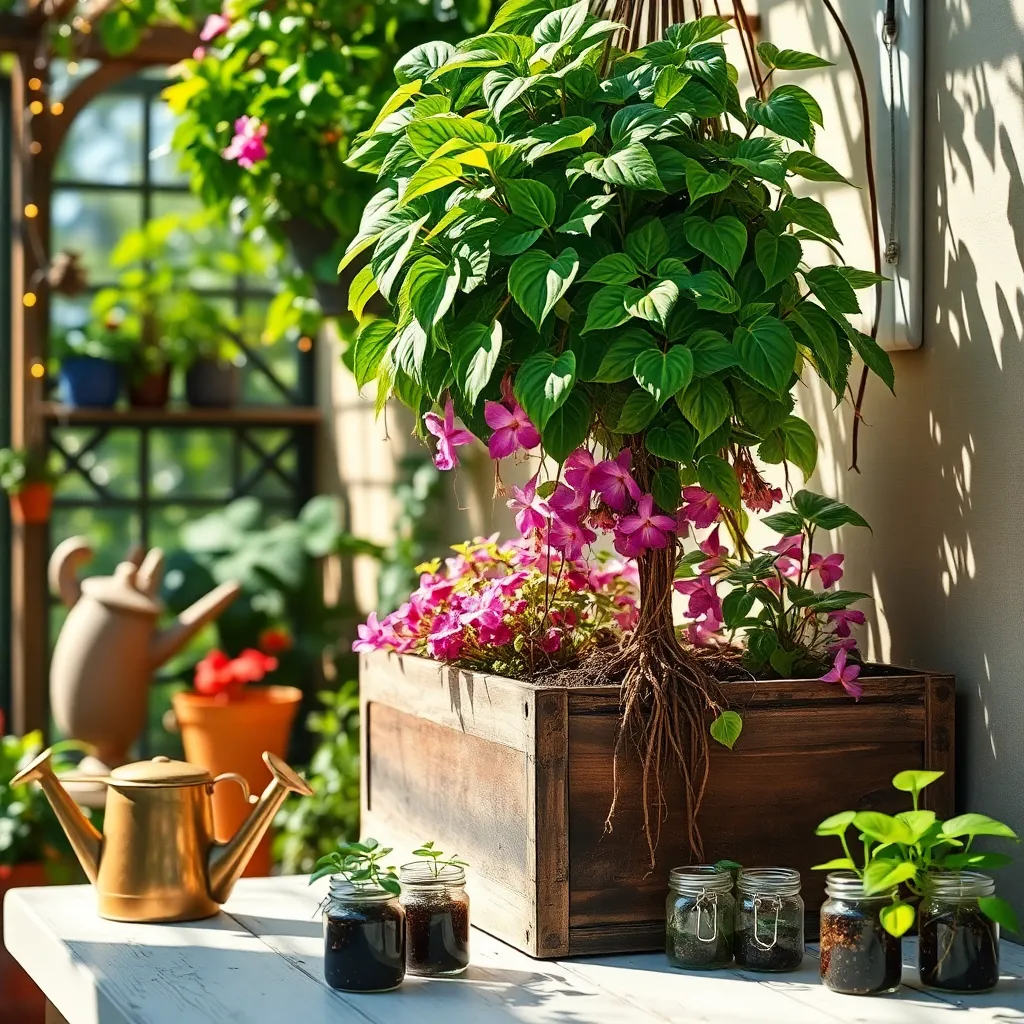
When selecting a parent plant for propagation, choose one that is robust and free of disease or pest infestations. Vigorous growth and vibrant foliage are signs of a healthy plant that will yield successful cuttings.
It’s crucial to assess the parent plant’s environment to ensure it thrives in conditions similar to those you’ll provide for the cuttings. Ideal growing conditions include adequate light, proper humidity, and the right soil mix, such as a well-draining potting soil with added perlite for aeration.
For beginners, it may be helpful to look for plants that are already thriving in your home environment, as they have adapted well to your specific conditions. Consistency in care—like regular watering and feeding every few weeks with a balanced liquid fertilizer—will support healthy parent plant growth.
Advanced gardeners can experiment with selecting plants that have desirable traits such as unique leaf shapes or color variations. By choosing parent plants that exhibit these characteristics, you can cultivate new plants with similar aesthetic qualities, enhancing your home garden’s diversity.
Gather Necessary Propagation Tools
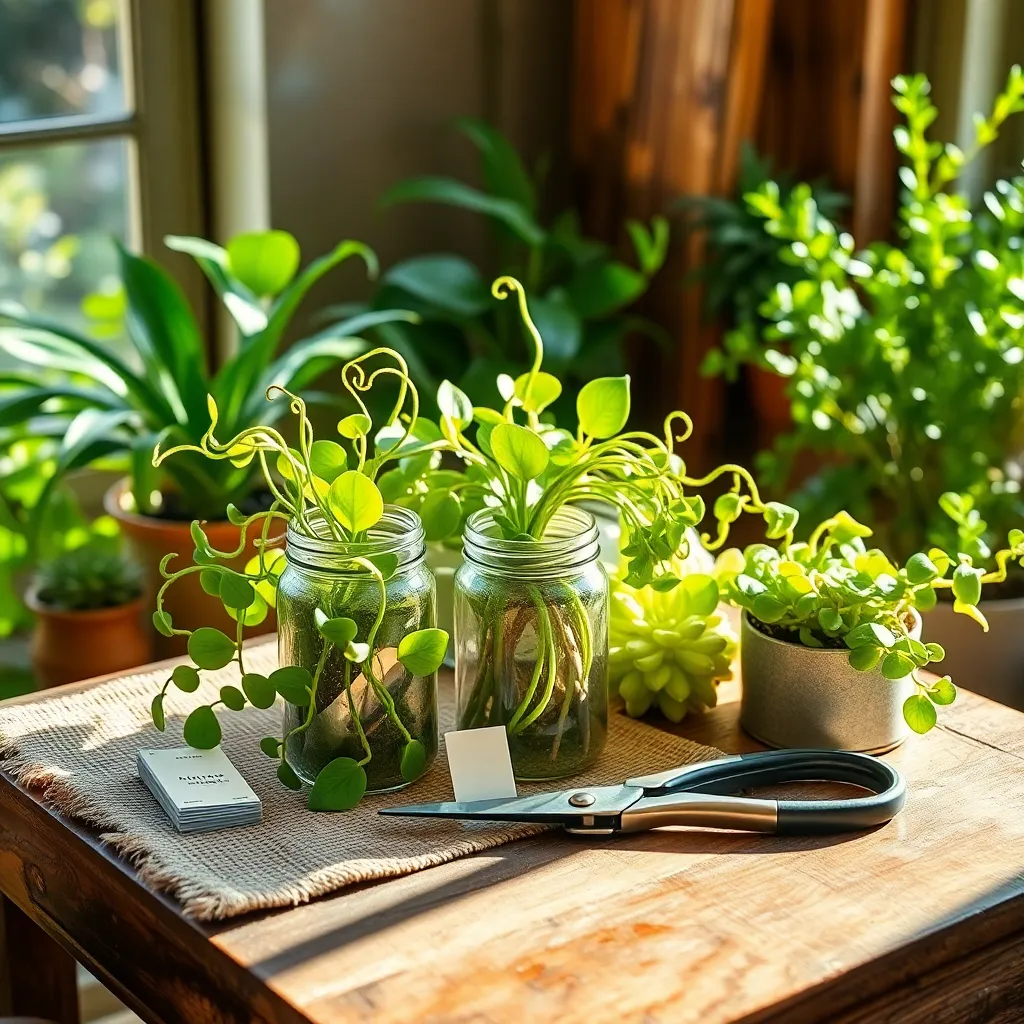
Before you start propagating your hanging plants, it’s essential to gather the right tools to ensure success. A pair of clean, sharp pruning shears is crucial for making precise cuts that help promote healthy growth.
In addition to shears, you’ll need a container of water or some small pots filled with appropriate soil. If you’re opting for soil propagation, choose a light, well-draining mix to prevent waterlogging, which can lead to root rot.
Invest in some rooting hormone, especially if you’re working with plants that are more challenging to propagate. This can help accelerate root development and increase your success rate with difficult species.
For those looking to get advanced, consider using a propagation tray with a humidity dome. This setup can provide a controlled environment that encourages faster root formation by maintaining consistent moisture levels.
Cut Suitable Plant Stem
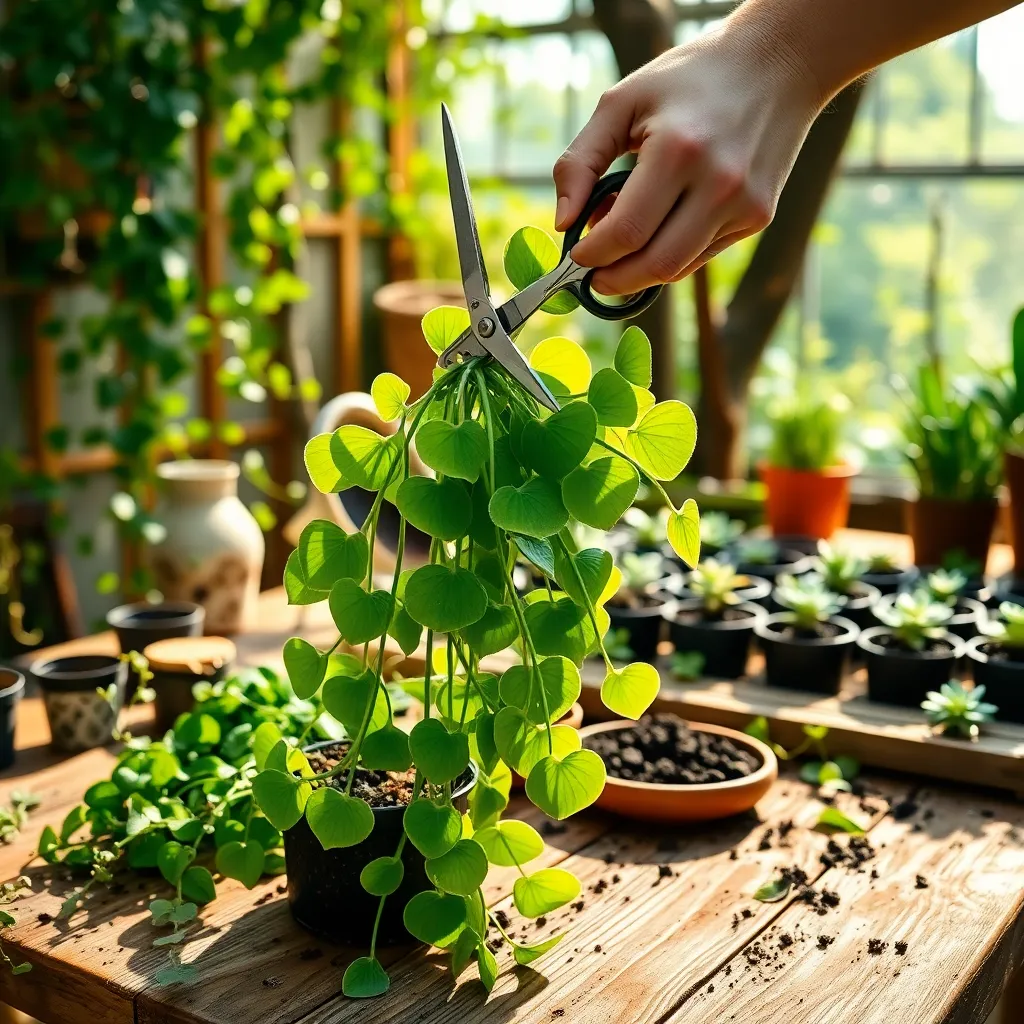
To ensure successful propagation, selecting the right stem is crucial. Look for a healthy stem that is free from diseases and pests, ideally between 4 to 6 inches long with several leaves.
Always choose a stem that has at least two nodes, as these are the points where roots will develop. Nodes are the small bumps on the stem where leaves and buds emerge, and they are essential for rooting.
Before cutting, make sure your tools are clean and sharp to prevent any damage to the plant. Use a pair of sterilized scissors or gardening shears to make a clean cut just below a node, ensuring not to crush the stem.
For best results, take cuttings in the morning when the plant is well-hydrated. This helps in maintaining the turgidity of the stem, which is vital for the cutting’s survival and rooting potential.
Prepare Potting Medium
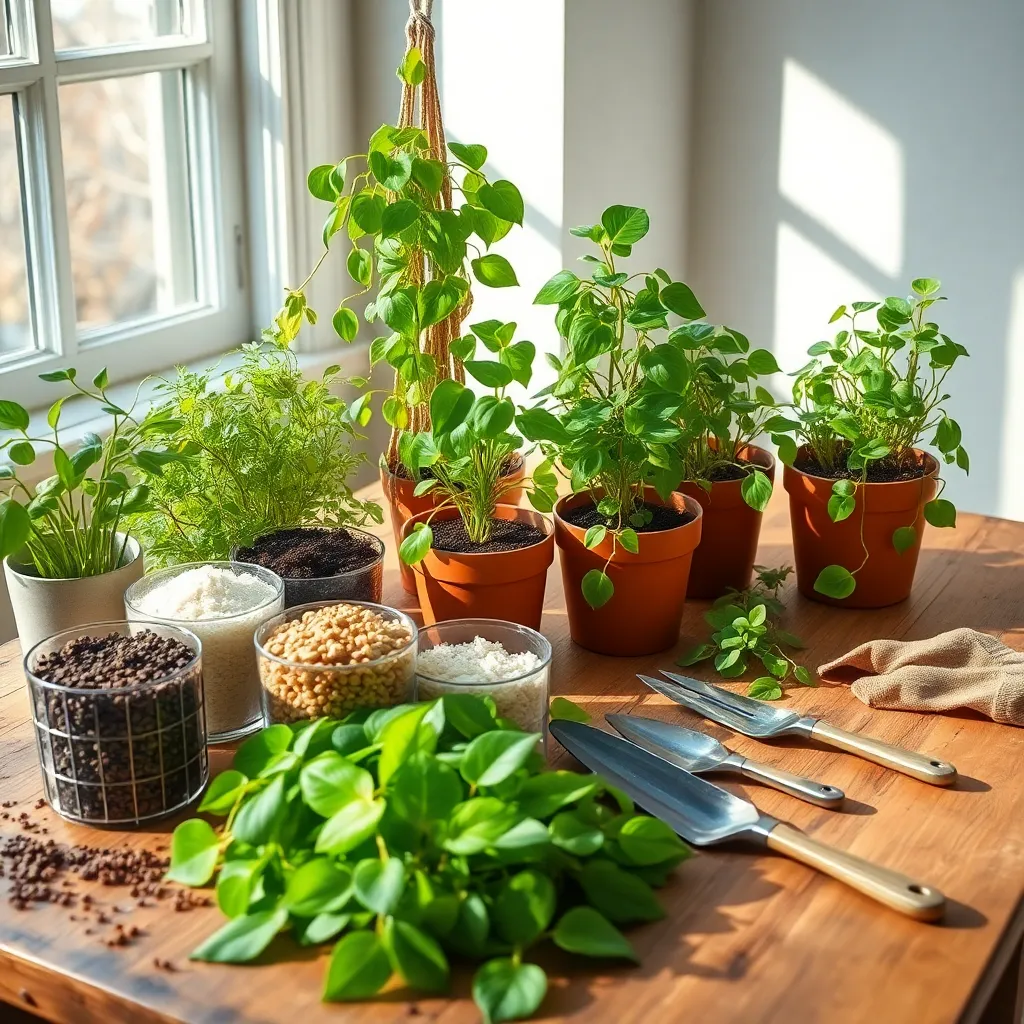
Creating the right potting medium is essential for successful propagation of hanging plants. Begin by choosing a light, well-draining soil mix to prevent root rot, which is common in many indoor plants.
A simple mix can be made by combining equal parts of peat moss, perlite, and coarse sand. Peat moss provides moisture retention, while perlite and sand enhance drainage, ensuring your cuttings don’t sit in waterlogged soil.
For those looking for an organic option, consider adding a bit of compost to the mix. This not only enriches the potting medium with nutrients but also encourages healthy root development.
Ensure the potting medium is slightly damp before inserting your cuttings. Watering it lightly beforehand helps maintain the right moisture level, which is crucial for root formation.
If you’re propagating a specific plant like a pothos or spider plant, adjust the medium accordingly. Pothos thrive in a slightly more moisture-retentive mix, while spider plants prefer a lighter and airier soil.
- Always use clean pots to avoid introducing diseases.
- Consider using a rooting hormone to speed up the rooting process.
- Label your pots with the plant name and date of propagation for easy tracking.
Plant and Monitor Growth
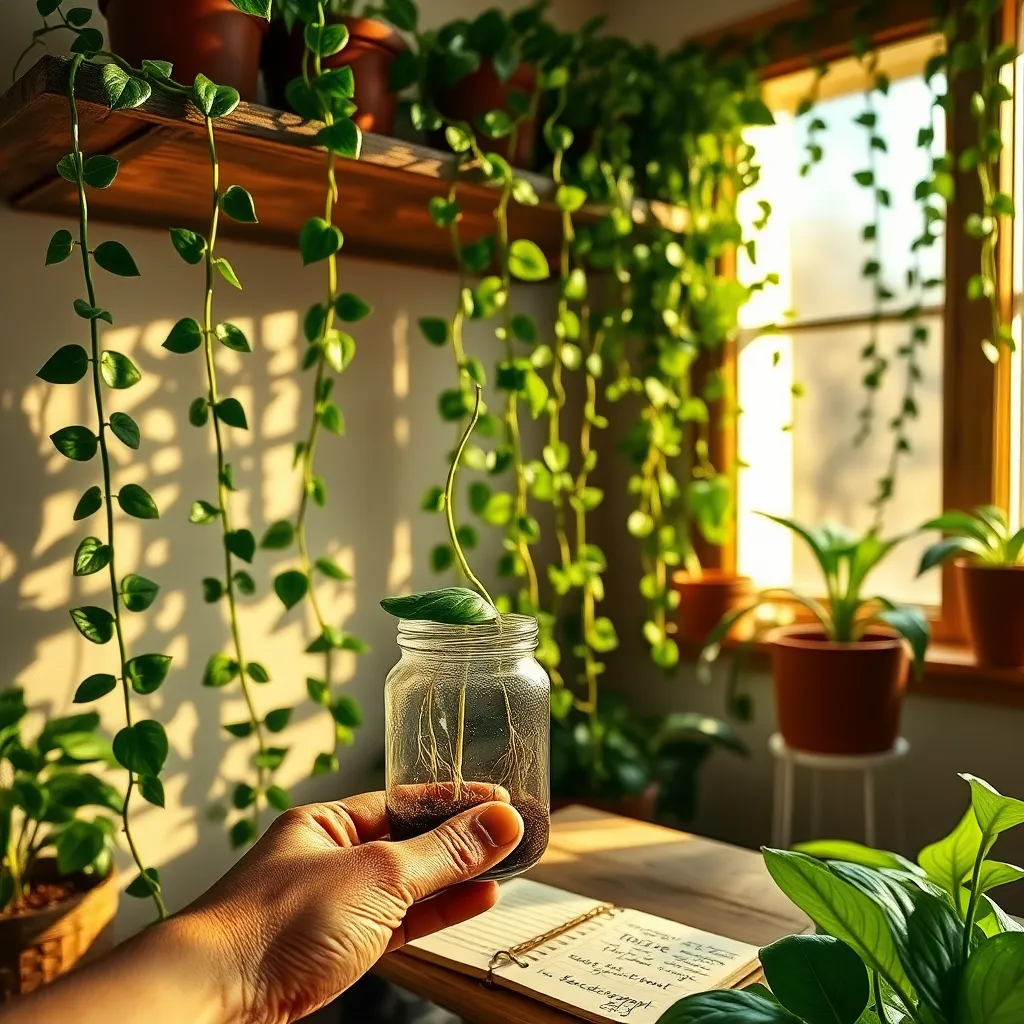
Now that you have prepared your potting medium, it’s time to plant your cuttings. Gently place each cutting into the soil, ensuring that at least one node is buried to encourage root growth.
Water the newly planted cuttings thoroughly to help them settle in. Use a spray bottle for a gentle watering method, which prevents disturbing the delicate cuttings.
Place the pots in a location with bright, indirect light, which is ideal for most hanging plants. Avoid direct sunlight, as it can scorch young plants and hinder their growth.
Consistent monitoring of your cuttings is crucial to their success. Check the soil moisture regularly, aiming to keep it slightly moist but not waterlogged.
For advanced gardeners, consider using a humidity dome to create a greenhouse effect, which can speed up root development. This is particularly useful in dry environments where maintaining humidity can be challenging.
Once a week, inspect the cuttings for any signs of growth or disease. Look for new leaves as a positive indicator that the roots are developing well.
If you notice yellowing leaves, it could be a sign of overwatering. Adjust your watering schedule accordingly, allowing the top inch of soil to dry out between waterings.
Conclusion: Growing Success with These Plants
In nurturing your hanging plants at home, you’ve explored five essential relationship concepts: the importance of creating a nurturing environment, the patience required for growth, the benefits of clear communication (even with your plants!), the value of consistent attention, and the joy of shared experiences. Just as these principles help your greenery thrive, they can also enhance your personal relationships, fostering deeper connections and understanding.
As your next actionable step, choose one plant or relationship to focus on this week. Dedicate time to observe its needs, provide consistent care, and witness the positive changes that follow. This small commitment can lead to significant growth, both in your garden and your personal life.
Remember, successful relationships, like flourishing plants, require ongoing attention and care. Save or bookmark this article as a handy guide to revisit whenever you need a reminder of these timeless principles. Let it be a source of inspiration and encouragement on your journey towards enriched relationships. With continued effort and dedication, your relationships can blossom into something truly beautiful and enduring. Keep nurturing, and watch as both your plants and connections flourish!

